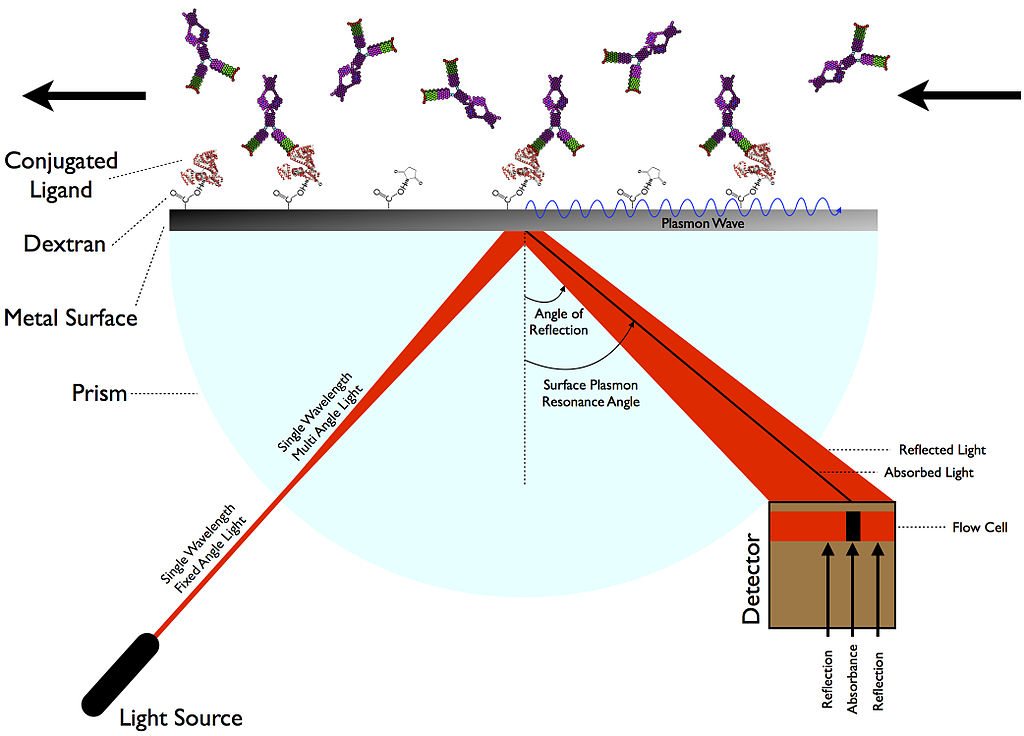Surface Plasmon Resonance Explained | Real-Time Molecular Analysis
Definition: Surface Plasmon Resonance (SPR) is a powerful and sensitive analytical technique for studying the interactions between biomolecules in real time without the need for labels. This phenomenon is rooted in the excitation of surface plasmons by light, leading to a resonance condition that is highly sensitive to changes in the refractive index near the surface of a metal. SPR technology has become a cornerstone in the fields of biochemistry, physics, and nanotechnology, offering insights into molecular binding kinetics, drug discovery, and sensor development.

Definition and Principle of Operation
SPR occurs when polarized light hits a metal-dielectric interface at a specific angle, causing electrons in the metal to oscillate and generate coherent electron density waves known as surface plasmons. This interaction results in a sharp dip in the reflected light intensity at a particular angle, known as the resonance angle, which is sensitive to changes in the refractive index of the material close to the metal surface.
How Surface Plasmon Resonance Works
The basis of SPR analysis is the measurement of changes in the resonance angle as molecules bind to or dissociate from the metal surface. This change can be detected and quantified, providing detailed information on the binding kinetics, affinity, and concentration of the analyte without the need for fluorescent or radioactive labeling.
An SPR instrument typically consists of a light source, a metal-coated prism, a flow cell for sample introduction, and a detector. The light is directed through the prism to the metal layer where it interacts with the sample flowing over the surface. The angle at which resonance occurs is then measured, revealing details about the molecular interactions occurring at the surface.
Key Features of Surface Plasmon Resonance
SPR technology is distinguished by several key features:
- Label-Free Detection: SPR allows for the direct detection of biomolecular interactions without the need for secondary labels, simplifying the experimental setup and preserving the natural state of the biomolecules.
- Real-Time Analysis: SPR provides real-time monitoring of molecular interactions, making it possible to observe the rates of association and dissociation as they occur.
- High Sensitivity: Due to its dependence on changes in the refractive index, SPR is extremely sensitive to molecular binding events, even when involving small molecules.
- Quantitative Data: SPR not only detects the presence of molecular interactions but also provides quantitative information on binding constants, kinetics, and concentration levels.
Limitations of Surface Plasmon Resonance
While SPR is a powerful technique, it has limitations:
- Surface Dependency: SPR measurements are sensitive to the nature of the surface, requiring careful preparation and functionalization of the sensor chip.
- Mass Sensitivity: SPR is more sensitive to larger analytes due to their greater impact on the refractive index, which can be a limitation when studying small molecules or ions.
Applications of Surface Plasmon Resonance
SPR has found applications in a wide range of fields:
- Drug Discovery: In pharmaceutical research, SPR is used to screen drug candidates by studying their interactions with target proteins or DNA.
- Biosensors: SPR technology underpins the development of biosensors for detecting pathogens, toxins, and other analytes in healthcare, environmental monitoring, and food safety.
- Material Science: SPR contributes to the characterization of thin films, coatings, and the study of surface phenomena at the nanoscale.
- Immunology: By analyzing antibody-antigen interactions, SPR aids in vaccine development and the study of immune responses.
To sum it up, is a versatile and insightful technique that continues to open new avenues in scientific research and technological development. Its ability to provide detailed, real-time data on molecular interactions at the nanoscale makes it an invaluable tool in the advancement of nanotechnology, medicine, and beyond.
Further Reading
Communications Biology, A comprehensive review on plasmonic-based biosensors used in viral diagnostics
Biosensors & Bioelectronics, Surface plasmon based plasmonic sensors: A review on their past, present and future
